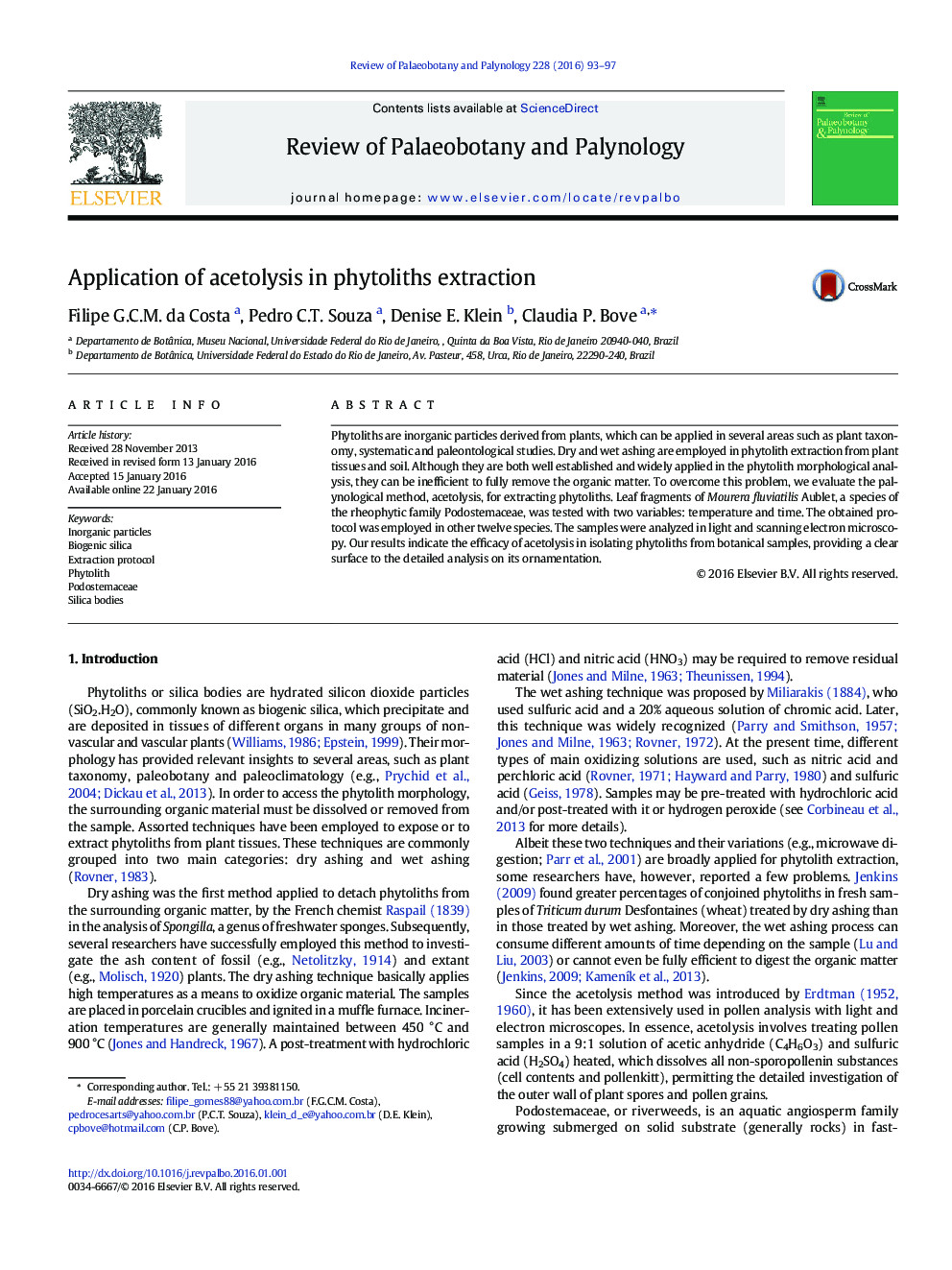| Article ID | Journal | Published Year | Pages | File Type |
|---|---|---|---|---|
| 4750095 | Review of Palaeobotany and Palynology | 2016 | 5 Pages |
•Acetolysis method provides an efficient and quick procedure for phytolith extraction.•Temperature and time are key variables in phytolith extraction by acetolysis.•Acetolysis is more efficient than dry ashing and quicker than wet ashing methods.
Phytoliths are inorganic particles derived from plants, which can be applied in several areas such as plant taxonomy, systematic and paleontological studies. Dry and wet ashing are employed in phytolith extraction from plant tissues and soil. Although they are both well established and widely applied in the phytolith morphological analysis, they can be inefficient to fully remove the organic matter. To overcome this problem, we evaluate the palynological method, acetolysis, for extracting phytoliths. Leaf fragments of Mourera fluviatilis Aublet, a species of the rheophytic family Podostemaceae, was tested with two variables: temperature and time. The obtained protocol was employed in other twelve species. The samples were analyzed in light and scanning electron microscopy. Our results indicate the efficacy of acetolysis in isolating phytoliths from botanical samples, providing a clear surface to the detailed analysis on its ornamentation.
